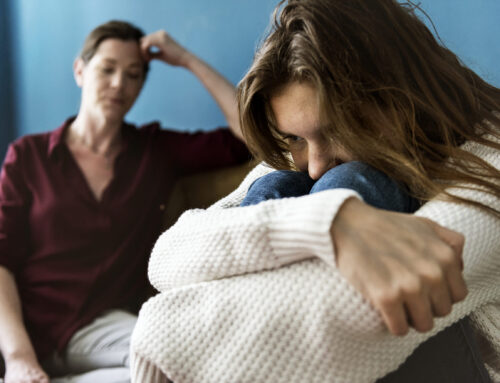Like other mental health disorders, post-traumatic stress disorder (PTSD) looks different from person to person. The same traumatic situation may be experienced by many, but the many might have varying perspectives of the situation. What might have lasting traumatic effects on one, might not have such a lasting impact on another.
But how are you to know? How can you identify PTSD in yourself or a loved one?
By paying special attention to the early signs.
Through the early signs, it’s possible to catch PTSD so that neither you nor someone you know has to live with it untreated for long.
What is trauma?
Trauma is a response to a deeply distressing event which upsets one’s emotional, physical, mental and spiritual stability. It affects one’s ability to cope in a healthy manner, causes feelings of helplessness and limits one’s ability to feel a full range of emotions. Simply put, trauma takes away from a person’s experience to live life fully and freely.
What causes trauma?
While they are definitely traumatic events, war, a tragic accident or a natural disaster are not the only forms of trauma. Trauma does not have to occur in a one-time event; certain forms of trauma, such as that experienced in domestic violence situations, can go on for so long that the unending exposure to this level of chronic stress leads to trauma.
Other traumatic situations include, but are not limited to:
- Emotional, physical or sexual abuse
- Domestic violence
- Discrimination, racism or oppression
- Terrorism
- Rape
- Witnessing or being a victim of violence
- Childhood neglect
- A family member or close relation struggling with a substance abuse or mental health disorder
- Sudden loss, such as in the case of suicide
What are the early signs of trauma?
Because of each individual’s varying experiences, people may exhibit signs of trauma in different ways. Typically speaking, however, there are common signs that those in the early stages of PTSD may begin to experience and/or exhibit.
- Flashbacks – Flashbacks aren’t just a memory or recalling of the event. During a flashback, the individual will feel like they are back where it all happened and that it is happening again, word for word, action for action. This may lead to panic, behavior which is extreme, erratic and aggressive, triggered by something as simple as a certain sound or smell.
- Intrusive thoughts – Different from flashbacks, intrusive thoughts are memories or recollections of the event, which leads to a corresponding emotional response. They may occur completely out of the blue, or because the individual finds themselves in a situation with reminders of the traumatic event.
- Avoidance – Avoidance is exactly what it sounds like: refusing to go to places or interact with people or things serving as reminders of the trauma. This could be anything from staying away from a certain area of town to even refusing to get into a vehicle, if, for example, trauma was induced as a result of a car accident.
- Nightmares – Nightmares are common symptoms of PTSD, where the individual suffers from vivid, distressing dreams as a result of trauma.
- Memory loss – As a direct result of stress, the body’s reaction is to cope by forgetting what occurred, whether in whole or part. Memory and stress are closely linked in the brain, meaning when stress is chronic or extreme, memory is negatively impacted as a result. Through treatment, painful memories can arise making it important to experience trauma healing in close partnership with a trauma-informed counselor.
- Hypervigilance – Post trauma, the body enters into a state of hypervigilance, a feeling of being on edge and constantly prepared to react. It is a fearful state of being, one of exhaustion and unease, which can have physically and emotionally negative effects on an individual.
- Insomnia – When one goes to sleep, the busy activities of the day are not present to keep the brain focused on something other than recollections, emotions or feelings regarding the trauma. This can make sleep unwelcome for some trauma sufferers, or an unattainable luxury for hypervigilant individuals.
- Struggling to feel positive emotions – Either one struggles to accept and feel positive emotions associated with good experiences, or one is so overcome with guilt, anger and/or shame that these emotions inhibit the individual from feeling much else.
- Reduced interest – After trauma, one might feel disinclined to partake in social events or activities which previously brought them joy. The exhaustion, fear and irritability can make previously enjoyable hobbies feel bland or challenging.
- Risky behaviors – Especially common in individuals who had adverse childhood experiences (ACEs), such as abuse or neglect. There are risky behaviors that can manifest in substance abuse, behavioral addictions like gambling or reckless sexual behavior, as a means of coping with trauma.
Knowing PTSD signs for early intervention
Typically, PTSD is only diagnosed through a therapist. However, an individual who has undergone a traumatic event might be able to recognize these early signs of PTSD in themself. If this is the case, the next step following this self-awareness is to reach out for guidance.
As much as we would like it to be the case, traumatic events cannot be erased from one’s mind or life experience. However, through trauma-informed care, that is, treatment which takes into account the whole individual and their personal story, healing can happen.
To speak with a therapist today, contact Tapestry at 828-490-4032.






